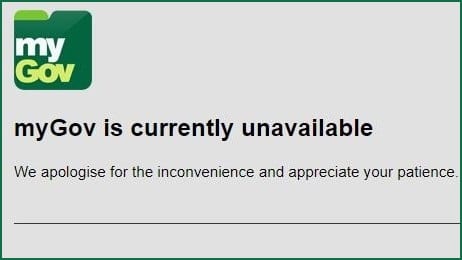It’s not difficult to imagine the panic that Australian Government public servants and ministers must have felt when the myGov website crashed under unprecedented demand for Centrelink support.
Now imagine that was your non-profit organisation’s website due to unprecedented traffic from people trying to donate. Don’t be like myGov!

I’ve been there before – let me share with you how I would make your website Coronavirus-proof.
Why websites go down
- CPU overwhelmed
- RAM overwhelmed
- Database overwhelmed
Most common causes
- Inefficient programming code
- Resource-scaling limitations
- Cyber-attacks
Most websites are hosted on a single server, which is limited to that server’s CPU, RAM, and Database capacity. Once you have enough traffic to overwhelm any one of those resources, the website will slow down, and eventually crash.
Emergency measures
1. Cloudflare
The most effective emergency measure you should take is to put your website server behind a cloud-based service that will shield it from the bulk of the traffic you are receiving. I can help you sign-up with Cloudflare (there are ways to get free Business accounts for non-profits – ask me how!). Cloudflare can protect your server from 60-80% of your total hits, serving cached static assets on your behalf, and free-up your web server resources (CPU, RAM, and Database) to deal with the increased demands more effectively.
2. Simplify your website
If most people are coming to your website to donate, and having to serve all of the other pages on your website is taking up server resources, then consider bypassing your Content Management System (CMS, e.g. Drupal, WordPress, etc) altogether. Create a static HTML landing page that just provides links to donate, and redirect all traffic to that page. When your web server doesn’t have to load your CMS for every visitor, it will usually be able to serve 60-80% more people. Ask me how!
3. Identify programming bottlenecks
There is usually only a few parts of your website code that are inefficient, and cause excessive resources to be consumed. That’s not a problem when you don’t have much traffic, but the problem is when you have thousands of users at once, those inefficiencies multiply and can bring the whole thing crashing down. It’s important to get your website developer to look at any areas that may be able to be simplified. Anything that involves the need to search large database tables will be a likely culprit. If possible, find a way to bypass those features temporarily.
Future-proofing your website
If you have the luxury of not being in an emergency traffic scenario, consider ways you can future-proof your website’s ability to cope under pressure.
4. Do all of the above now
Don’t skip steps 1-3. They are all just as relevant, and important to do, and will be easier to implement without the panic of an emergency.
5. Invest in scalable hosting
Your website is only as robust as its weakest point. For this reason, I recommend migrating your website to either managed cloud-based hosting with options to scale your available resources to match demand, OR, if you have the technical know-how you can set-up your own scalable and redundant solution using multiple Virtual Private Servers, load balancers, and mirrored databases. Ask me how!
50% discount for eligible non-profits, healthcare providers, and small businesses
Until the end of April 2020, I am offering a discount to Australian non-profit organisations providing humanitarian assistance for people affected by COVID-19, healthcare providers, and qualifying small businesses that have been directly impacted by the pandemic.


